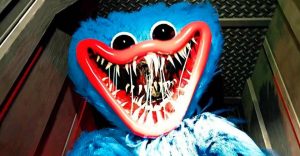The X-Files: Every Frankenstein Reference In “The Post-Modern Prometheus”

In Chris Carter’s sci-fi television series The X-Files season 5, episode 5, “The Post-Modern Prometheus”, the iconic Frankenstein’s monster is referenced numerous times throughout its entirety. It is shot entirely in black and white in order to encapsulate the cinematography of classic creature features from the 1930s. While Mary Shelley’s 1818 gothic horror novel Frankenstein is not the only monster featured in “The Post-Modern Prometheus”, it was Carter’s primary influence on this particular “Monster-of-the-Week.”
The X-Files premiered in 1993 and ran until season 9 concluded in 2002. In 2016, it was rebooted for season 10 and 11, which concluded the story arc of FBI special agents Dana Katherine Scully (Gillian Anderson) and Fox Mulder (David Duchovny). The initial plot of The X-Files followed the two agents on the search for Mulder’s missing sister Samantha who was supposedly abducted by aliens when they were children. In order to find her, he enlisted in the FBI and was assigned the unsolved “x-files” cases that include paranormal, extra-terrestrial, and monstrous elements. Each season includes upwards of 20-episodes and various stand-alone episodes, including “The Post-Modern Prometheus”, that feature different cryptids, hauntings, and more.
In “The Post-Modern Prometheus”, Carter utilized the iconic creature feature crafted in the 1930s in order to elevate this particular episode’s horror elements. Not all of The X-Files episodes can be considered horror, but this one goes above and beyond to ensure that it is. Frankenstein has been adapted and recreated in various movies and television shows over the years, and remains one of the most iconic monsters in pop culture. “The Post-Modern Prometheus” is an extraordinary example of the use of classic creature references to create more contemporary horror.
References To Mary Shelley’s Book Frankenstein

The most obvious reference to Mary Shelley’s 1818 novel is the title of “The Post-Modern Prometheus” as the full title of the novel is Frankenstein; or, The Modern Prometheus. In the episode, instead of being referred to as the “creature” or Prometheus, the Frankenstein-esque monster is named Mutato due to his disfigured appearance and how he was created. Dr. Pollidori created this creature while experimenting on a Hox gene found in flies. Mulder quickly draws a connection between Dr. Pollidori and Dr. Frankenstein, claiming that the former is a modern-day version of the 19th century doctor.
In essence, “The Post-Modern Prometheus” takes its name from the original 1818 novel as well as the primary plot of the novel; a doctor attempts to play god and creates a destructive, but misunderstood creature. The episode actually bears more likeness to the 1931 film directed by James Whale and starring Boris Karloff as the creature.
References To Universal’s Classic Movie Frankenstein

In 1931, James Whale created one of the most iconic adaptations of Mary Shelley’s Frankenstein and the signature look of Boris Karloff’s monster is known far and wide. It is one of the most important films in horror cinema history that pre-dates censorship guidelines and helped popularize sci-fi horror films for the 20th century. In “The Post-Modern Prometheus”, it culminates to Mulder and Scully protecting the Frankenstein equivalent, Mutato, in a farmhouse basement. All of the townspeople discover the location of the horrific Mutato and immediately go after him. After the barn is ignited, the mob is sent into a frenzy but once he tells them his side of the story, their anger alleviates.
The 1931 creature did not have the same luck as Mutato. By the end of the film, Frankenstein’s monster has accidentally committed such an astonishing amount of atrocities that the townspeople vehemently despise him and want to see him dead. When the creature climbs to the top of a windmill, it is set on fire by the mob. Attempting to escape, he becomes trapped inside and presumably dies. While Mutato lives and the original creature does not, they reached nearly identical ends with angry mobs and fire. This scene in particular is not present in Shelley’s book. Instead, the creature floats off to see and is never seen again.
Ultimately, season 5, episode 5, “The Post-Modern Prometheus”, draws from the most iconic moments from the 1931 film and the primary plot of Shelley’s 1818 gothic horror novel. In this particular episode of The X-Files, the references to Frankenstein are plentiful and perfectly executed.
About The Author

















